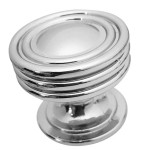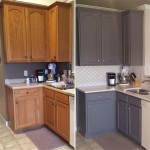Adjusting Hinges On A Cabinet Door
Cabinet doors, pivotal components of any kitchen, bathroom, or storage area, often require adjustment to maintain proper alignment and functionality. Over time, factors such as everyday use, temperature fluctuations, and the natural settling of a building can cause cabinet doors to sag, rub, or fail to close correctly. Understanding the mechanics of cabinet hinges and the methods for adjusting them is essential for homeowners and professionals alike. This article provides a detailed guide to adjusting hinges on a cabinet door, covering various hinge types and troubleshooting common alignment issues.
Before embarking on any adjustments, it is crucial to identify the type of hinge installed on the cabinet door. Different hinge types have different adjustment mechanisms. The most common types include European-style hinges (also known as concealed or cup hinges), butt hinges, and surface-mounted hinges. Each requires a distinct approach to achieve the desired alignment.
European-style hinges are widely used in modern cabinetry due to their adjustability and concealed design. These hinges typically feature multiple screws that control different aspects of the door's position. Butt hinges, more traditional in design, are commonly found in older cabinets. Adjusting butt hinges often involves shimming or repositioning the hinge itself. Surface-mounted hinges are typically found on older, less expensive cabinets and are generally the least adjustable. Understanding the specific hinge type is the first step towards a successful adjustment.
Identifying the Problem and Assessing the Existing Alignment
The initial step in any cabinet door adjustment is to accurately diagnose the alignment problem. This involves a close visual inspection to determine the nature and severity of the issue. Common problems include the door rubbing against the cabinet frame, a noticeable gap between the door and the frame, the door hanging unevenly, or the door failing to latch properly. It’s also important to check whether the cabinet itself is level, as an unlevel cabinet can contribute to door alignment issues. A carpenter's level can be used to assess the cabinet’s levelness. If the cabinet itself is seriously out of level, addressing this may be necessary before attempting to adjust the door hinges.
Once the specific problem is identified, a more detailed assessment is needed. This involves examining the hinge points themselves. Check for loose screws, damaged hinges, or signs of wear and tear. Often, the screws holding the hinge to the cabinet frame or door have simply loosened over time. In such cases, tightening the screws may be the only adjustment necessary. However, if the screws are stripped or the hinge is damaged, a more significant repair or replacement may be required. Also, observe the gap between the door and frame at multiple points. This will help determine if the door is simply shifted to one side, hanging too low, or if the problem is more complex.
It is recommended to use a pencil to lightly mark the current position of the door and hinges. This provides a reference point and makes it easier to revert to the original position if the adjustments do not yield the desired results. These markings can also serve as a guide during the adjustment process, helping to visualize the extent of the necessary movements.
Adjusting European-Style Hinges
European-style hinges, with their concealed design and multiple adjustment points, offer a significant degree of control over the door's positioning. These hinges typically have three adjustment screws: one for horizontal adjustment (side-to-side), one for vertical adjustment (up-and-down), and one for depth adjustment (in-and-out). The location and orientation of these screws may vary slightly depending on the manufacturer, but their function remains consistent.
To adjust the door horizontally (side-to-side), locate the horizontal adjustment screw, typically situated on the hinge arm. Loosening this screw allows the door to be moved laterally. Slightly loosen the screw, then gently push or pull the door until it is aligned correctly within the cabinet frame. Once the door is in the desired position, tighten the screw to secure it. It's important to make small adjustments and check the alignment frequently to avoid overcorrecting. Over-tightening the screws can strip the threads or damage the hinge itself.
For vertical adjustments (up-and-down), find the vertical adjustment screw, often located on the hinge plate that is attached to the cabinet frame. Loosening this screw allows the door to be raised or lowered. Similar to the horizontal adjustment, slightly loosen the screw and then move the door up or down to the desired position. Once aligned, tighten the screw securely. If the door is sagging noticeably, this adjustment will likely be necessary. It may also be necessary to adjust both hinges on the door to achieve a consistent vertical alignment.
The depth adjustment (in-and-out) controls how far the door sits relative to the cabinet frame when closed. This screw is typically located near the hinge cup, which is the part of the hinge that sits inside the door. Loosening this screw allows the door to be pushed in or pulled out. This adjustment is useful for ensuring that the door closes flush with the cabinet frame, without any gaps or protrusions. As with the other adjustments, make small changes and check the alignment frequently.
After making each adjustment, open and close the door several times to check the alignment and ensure smooth operation. Re-tighten all screws firmly, but avoid over-tightening. If the alignment is still not satisfactory, repeat the adjustment process, making further small adjustments as needed. Sometimes, a combination of all three adjustments is required to achieve perfect alignment.
Adjusting Butt Hinges
Butt hinges, a more traditional style, present a different set of challenges when it comes to adjustment. These hinges are typically less adjustable than European-style hinges. The primary method for adjusting butt hinges involves either shimming or repositioning the hinge itself. Shimming involves placing thin pieces of material, such as cardboard or veneer, behind the hinge plate to alter its position.
If a cabinet door is sagging or rubbing against the frame, shimming the lower hinge can often correct the problem. To do this, loosen the screws of the lower hinge and insert a shim between the hinge plate and the cabinet frame. The thickness of the shim will depend on the extent of the misalignment. Start with a thin shim and gradually increase the thickness until the door is properly aligned. Once the shim is in place, tighten the screws securely. It's important to use shims that are durable and resistant to moisture, as they will be permanently installed between the hinge and the frame.
Repositioning the hinge is a more involved process that requires removing the hinge and re-drilling the screw holes. This is typically necessary when the existing screw holes are stripped or the hinge is significantly out of alignment. To reposition a hinge, first remove it from the cabinet frame. Then, fill the old screw holes with wood filler and allow it to dry completely. Once the wood filler is dry, carefully re-drill the screw holes in a slightly different location, ensuring that the hinge is properly aligned. Reattach the hinge and tighten the screws securely.
When working with butt hinges, it's crucial to use the correct size and type of screws. Using screws that are too short or too thin can lead to the hinge loosening over time. It's also important to avoid over-tightening the screws, as this can strip the threads in the wood. If the existing screw holes are already damaged, consider using longer screws or screws with a coarser thread to provide a more secure hold.
If the door still doesn't align properly after shimming or repositioning, it may be necessary to adjust the strike plate, which is the metal plate on the cabinet frame that the door latch engages with. Loosening the screws of the strike plate allows it to be moved slightly, ensuring that the door latch aligns correctly. Once the strike plate is in the proper position, tighten the screws securely.
Addressing Common Issues and Troubleshooting
Even with a thorough understanding of hinge adjustment techniques, certain issues can persist. One common problem is stripped screw holes, which prevent the screws from tightening properly. This can be resolved by using wood glue and toothpicks or small wooden dowels to fill the stripped holes. Break off the toothpicks or dowels flush with the surface, let the glue dry, and then re-drill pilot holes before reinstalling the screws. Another option is to use screw thread inserts, which provide a more durable and secure anchor for the screws.
Another issue is damaged or bent hinges. If a hinge is visibly damaged, it should be replaced. Trying to adjust a damaged hinge can exacerbate the problem and potentially cause further damage to the cabinet door or frame. Replacement hinges are readily available at most hardware stores. When replacing a hinge, make sure to match the size and type of the existing hinge to ensure a proper fit.
In some cases, the problem may not be with the hinges themselves, but rather with the cabinet door or frame. Warping or swelling of the wood can cause alignment issues that cannot be resolved simply by adjusting the hinges. If the door is warped, it may be necessary to replace it. If the frame is warped, you may need to reinforce it with additional bracing or shims.
When adjusting multiple cabinet doors in a kitchen or bathroom, it’s best to work systematically. Start by adjusting the most problematic doors first, and then move on to the others. This will help ensure that all of the doors are aligned properly and that the overall appearance of the cabinetry is uniform.
Adjusting cabinet door hinges is a skill that improves with practice. By understanding the different types of hinges, identifying the specific alignment problem, and following the appropriate adjustment techniques, homeowners and professionals can keep their cabinets functioning smoothly and looking their best.

Adjusting Cabinet Hinges The Diy Life

How To Adjust Your Kitchen Cupboard Doors Made Easy

Cabinet Hinges How To Adjust Doors

How To Adjust Hinges The Right Way Hestia Hearth Design Burlington

How To Adjust Kitchen Cabinet Doors And Hinges The Big Idea

How To Adjust Cabinet Hinges

How To Adjust 3 Screw Hidden Hinges Align Cabinet Doors

Kitchen Cabinet Hinge Adjustment A Step By Guide Tkdc

3 Simple Ways To Adjust Kitchen Cabinet Doors Wikihow

How To Adjust Door Hinges Superstore Help Advice








